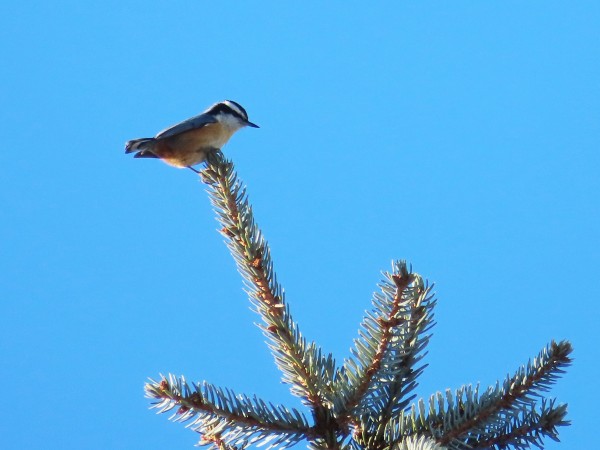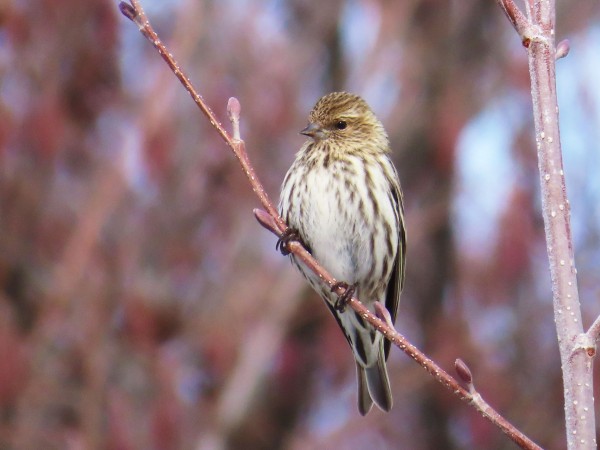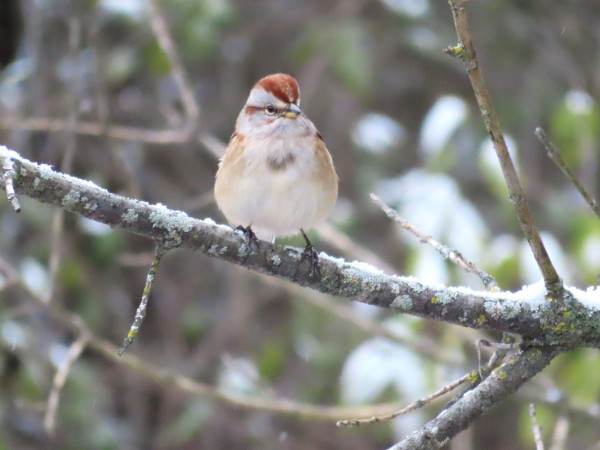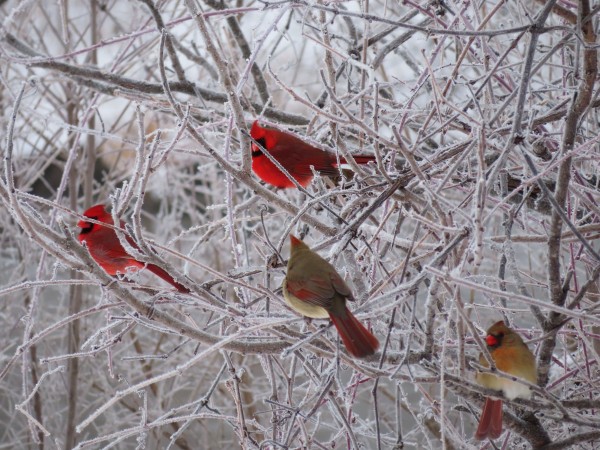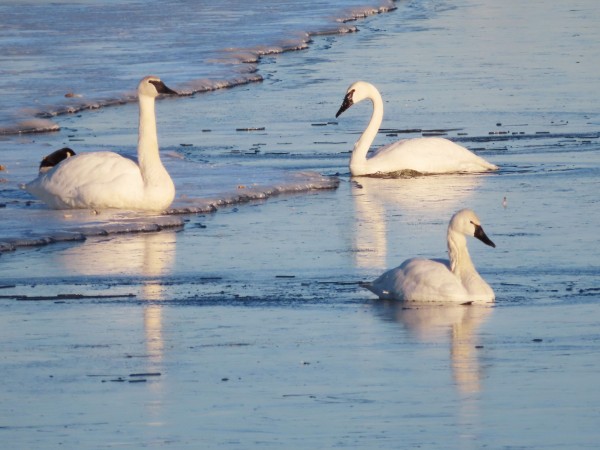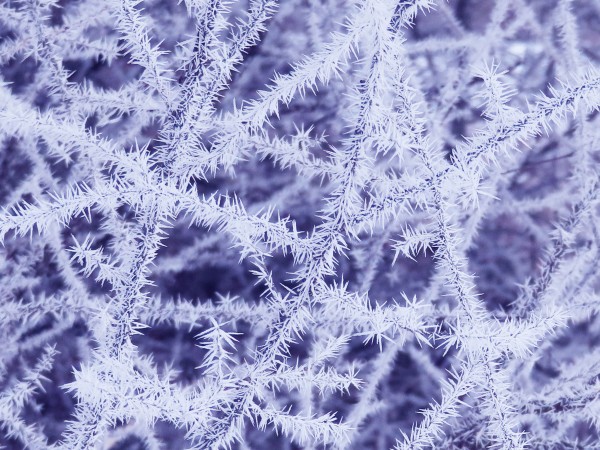Chuck's Birding Report #45
19 January - 25 January 2021
Dear fellow flock of birders,
What have the birds in the Arboretum been up to this past week?
I think this time of year we don't have a lot of different birds so my reports tend to be a bit repetitious. I'm looking forward to spring when new birds start migrating through the Arb. Be that as it may, the activity in the main part of the Arb is about as follows.
I'm seeing a few birds in the Crabapple Collection but not as many as in the past at this time of year. There are still some crabapples on the trees and I am seeing a few American Robins and American Goldfinches eating them. Some Wild Turkeys are eating the ones falling to the ground. As I walk through Wingra Woods I hear White-breasted Nuthatches and a variety of woodpecker drumming and calling. I've seen Red-bellied Woodpeckers chasing each other so maybe the nice days have stimulated some hormones. At Big Spring the number of Gadwalls has gradually been increasing over the past week. Today I saw 17. There are always a few Mallards and the Great Blue Heron is most often standing in the water at the far end of the outflow tucked in behind the branches of buckthorn bushes either on the right or left sides. Every year there are always one or two that stay during the winter while all the rest head south. In the pinetum at the east end of Longenecker Gardens I saw a Red-breasted Nuthatch the other day. Out on Icke Boardwalk I saw about six Pine Siskins eating seeds from the female catkins of the European Alder. They use their fine pointed beaks to pluck out the tiny seeds. As I continued to walk through Gallistel Woods I heard the pecking of a woodpecker I thought might be a Pileated Woodpecker. I looked and looked but could not find it. I went to Teal Pond next and then I heard the Pileated Woodpecker call. I never did see it. I have been hearing and occasionally seeing it more often these past couple weeks in the Arb. It always makes my day when I do see it.
After birding the main part of the Arb I went to Spring Trail Pond (aka the duck pond) which is a small section of the Arb with a good flowing spring with a nice pond that never freezes over. Many of the Arb birds go there in the winter to be able to drink the water and take baths too. In addition they can get all the food they want by flying across the street to all the homes with bird feeders. Several species are found there that normally migrate south but stay at Spring Trail Pond instead. For example Fox Sparrows, White-throated Sparrows, a Swamp Sparrow, a recent sighting of a White-crowned Sparrow, and a Spotted Towhee are there this winter. Other sightings included over 100 Mallards, Winter Wrens, American Crows, American Goldfinches, Black-capped Chickadees, Pine Siskins, the three major woodpeckers and Blue Jays. Today I saw 14 spectacularly colored Northern Cardinals all feeding together on some sunflower seeds dropped by visitors to the area. American Tree Sparrows and Dark-eyed Juncos are also commonly seen around the pond.
My last bird photo is of a pair of Trumpeter Swans and one Tundra Swan that I saw together over at Tenney park in the part of Lake Mendota just above the lock. This is not in the Arboretum but is in Dane County. To see the two species side-by-side is unusual. Most of the time in Madison we see many Tundra Swans migrating through in the winter but very few Trumpeter Swans. The easiest way to distinguish them is by their very different sounding calls. Differentiating by appearance is possible but more difficult. Some of the distinctive features include differences in sizes, the Trumpeter is larger than the Tundra. There is a difference in the shape of the black part of the beak meeting the white feathers of the forehead. In the Trumpeter it is V-shaped and in the Tundra it is U-shaped. In addition the black of the beak meets the eye in a wide band in the Trumpeter and a narrow band in the Tundra. Lastly if seen from a profile view the head of the Trumpeter from the top to the tip of the beak is a relatively straight line while in the Tundra the same line is somewhat dished or concave.
My last photo is my ice photo and it is meant to display something called rime. I added a bit of color to make the rime stand out more. I recently learned the difference between rime and hoar frost. Rime is formed when there is fog and cold weather and the fog water vapor condenses on trees, plants, etc forming crystalline spikes. In other words the formation goes directly from a gas to a solid without passing through a liquid. In the formation of hoar frost the dew-like liquid in cold weather in the absence of fog condenses on trees, plants, etc. forming the crystals of a variety of shapes. At least that is my understanding.
Good health to all and good birding too,
Chuck


